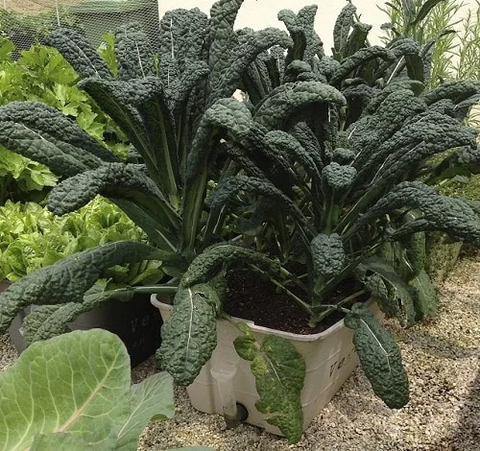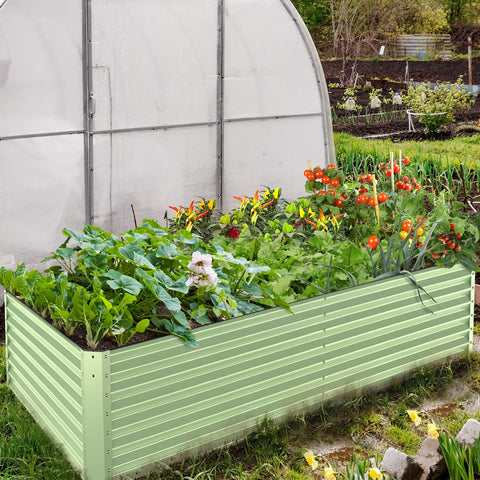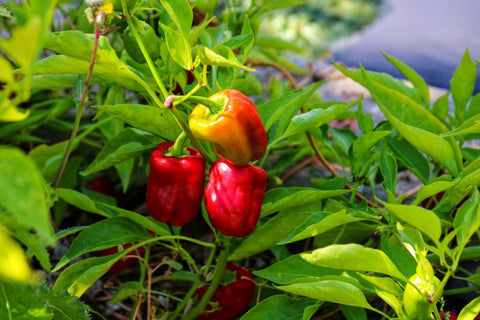Introduction: Cultivating Culinary Adventures in Your Garden
Gardening isn't just about the familiar vegetables and herbs we find in every kitchen; it's also about embracing the exotic, the unusual, and the adventurous. In this blog, we embark on a journey through the world of unique edibles, exploring ten exotic crops that adventurous gardeners can cultivate at home. From vibrant colors to distinctive flavors, these crops promise to add a touch of the extraordinary to your culinary adventures.

1. Dragon Fruit
Appearance:
- Known for its striking appearance, dragon fruit features a vibrant pink or yellow outer skin with green, spiky leaves. The inner flesh can be white, red, or magenta, speckled with tiny black seeds.
Cultivation Tips:
- Dragon fruit thrives in well-draining soil and requires a sunny location. It can be grown in containers, making it suitable for both gardeners with ample outdoor space and those limited to balconies or patios.
Use in the Kitchen:
- Dragon fruit adds a refreshing and mildly sweet flavor to smoothies, salads, or enjoyed on its own. Its unique appearance also makes it a stunning garnish for desserts.
2. Saffron Crocus
Appearance:
- Saffron crocus produces delicate purple flowers with crimson stigmas, which are hand-harvested to obtain saffron—the world's most expensive spice.
Cultivation Tips:
- Saffron crocus prefers well-drained soil and a sunny position. The corms can be planted in late summer or early autumn, and the saffron threads are harvested in the fall.
Use in the Kitchen:
- Saffron adds a distinct and aromatic flavor to a variety of dishes, from paellas to risottos. Its vibrant color also imparts a golden hue to the food it seasons.

3. Cape Gooseberry
Appearance:
- Encased in a papery husk, the cape gooseberry resembles a small, golden-orange tomato. The fruit inside is sweet and slightly tart.
Cultivation Tips:
- Cape gooseberries thrive in well-drained soil and prefer a sunny location. They can be grown in containers or directly in the garden, and their sprawling nature makes them suitable for hanging baskets.
Use in the Kitchen:
- Cape gooseberries can be eaten fresh, added to fruit salads, or used in jams and desserts. They bring a delightful sweet-tart flavor to culinary creations.
4. Romanesco Broccoli
Appearance:
- A visually stunning vegetable, Romanesco broccoli features lime-green fractal spirals that form a unique, cone-shaped head.
Cultivation Tips:
- Similar to traditional broccoli, Romanesco prefers well-drained soil and a cool climate. It is a cool-season crop that can be planted in early spring or late summer.
Use in the Kitchen:
- Romanesco broccoli can be prepared in the same ways as traditional broccoli. Its intricate pattern and nutty flavor make it an eye-catching addition to both raw and cooked dishes.

5. Kohlrabi
Appearance:
- Resembling a turnip growing above the ground, kohlrabi has a bulbous stem that comes in shades of green, purple, or white. The leaves are edible too.
Cultivation Tips:
- Kohlrabi is a cool-season crop that can be grown in well-drained soil. It is relatively low-maintenance and can be sown directly in the garden.
Use in the Kitchen:
- Both the bulb and leaves of kohlrabi are edible. The bulb can be eaten raw or cooked, while the leaves can be used in salads or sautéed as greens.
6. Pineberry
Appearance:
- Pineberry is a strawberry variety with a unique twist—it looks like a white strawberry with red seeds. Its appearance is reminiscent of a pineapple, hence the name.
Cultivation Tips:
- Pineberries can be grown in containers or in the garden. They require well-drained soil and prefer a sunny location. They are often grown as perennial plants.
Use in the Kitchen:
- Pineberries have a flavor that combines the sweetness of strawberries with a hint of pineapple. They can be enjoyed fresh, in desserts, or as a flavorful addition to salads.

7. Chayote Squash
Appearance:
- Chayote, also known as vegetable pear, is a green, wrinkled fruit with a crisp texture. It has a mild flavor and is often likened to a cross between a cucumber and a pear.
Cultivation Tips:
- Chayote thrives in warm climates and well-drained soil. It can be grown from the seed or by planting the entire fruit. The vine requires support for upward growth.
Use in the Kitchen:
- Chayote is versatile and can be used in salads, stir-fries, or as a substitute for other squash varieties. It can be enjoyed both raw and cooked.
8. Mizuna
Appearance:
- Mizuna is a Japanese mustard green with feathery leaves and a slightly peppery flavor. Its appearance is delicate yet vibrant, making it an attractive addition to gardens.
Cultivation Tips:
- Mizuna thrives in cool weather and well-drained soil. It can be grown from seeds and is often used as a cut-and-come-again green, meaning you can harvest leaves continuously.
Use in the Kitchen:
- Mizuna adds a peppery kick to salads, stir-fries, or as a garnish. Its tender leaves make it a delightful addition to a variety of dishes.

9. Tamarillo
Appearance:
- Tamarillo is an egg-shaped fruit with smooth, glossy skin ranging from red to orange to yellow. The flesh inside can be sweet or tangy, depending on the variety.
Cultivation Tips:
- Tamarillo thrives in warm climates and well-drained soil. It is typically grown as a small tree or large shrub. Protection from frost may be necessary in colder regions.
Use in the Kitchen:
- Tamarillo can be eaten fresh, added to salads, or used in jams and sauces. Its unique flavor is a delightful combination of sweetness and acidity.
10. Shiso
Appearance:
- Shiso, or perilla, is an herb with vibrant green or purple leaves. It has a unique, slightly spicy flavor and is often used in Asian cuisine.
Cultivation Tips:
- Shiso prefers well-drained soil and a sunny location. It can be grown from seeds and is suitable for both garden beds and containers.
Use in the Kitchen:
- Shiso leaves are used as a garnish in sushi, salads, and various Asian dishes. The herb adds a distinct flavor and a pop of color to culinary creations.
Conclusion: A Garden of Culinary Wonders
Embarking on the journey of cultivating unique edibles not only adds diversity to your garden but also opens up a world of culinary exploration. From the vibrant hues of dragon fruit to the exotic taste of tamarillo, each of these crops brings a touch of the extraordinary to your homegrown delights. As you delve into the realm of adventurous gardening, may your garden be a canvas for a rich tapestry of flavors, colors, and experiences, making every meal a culinary adventure to savor and share.









